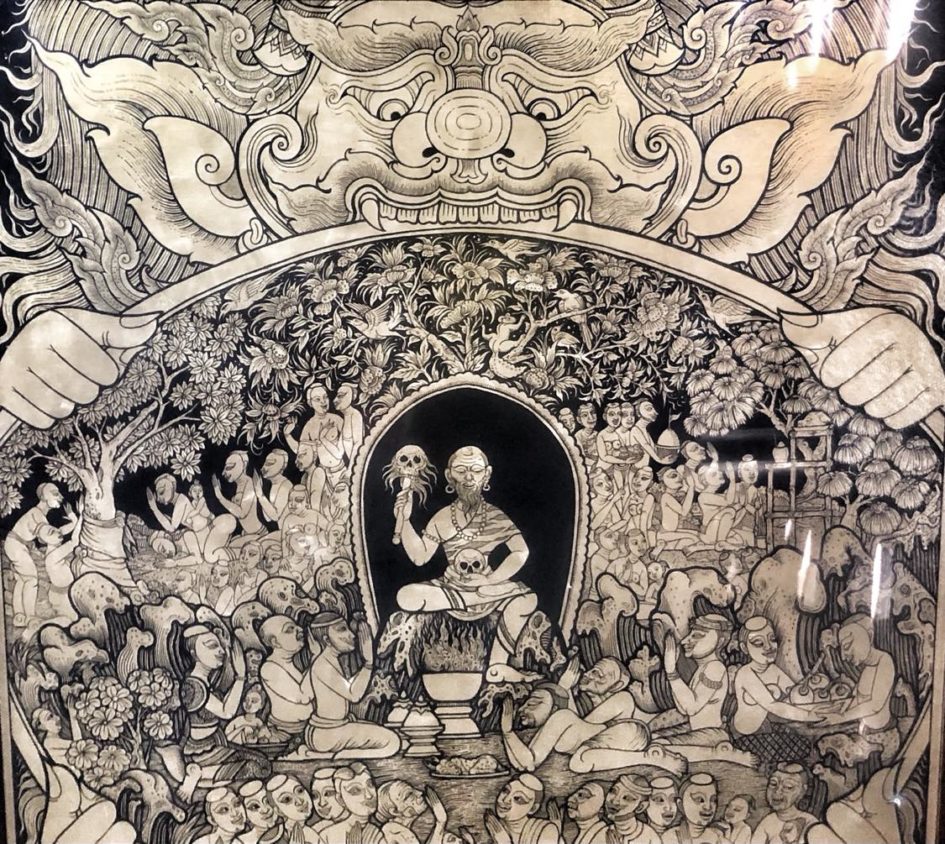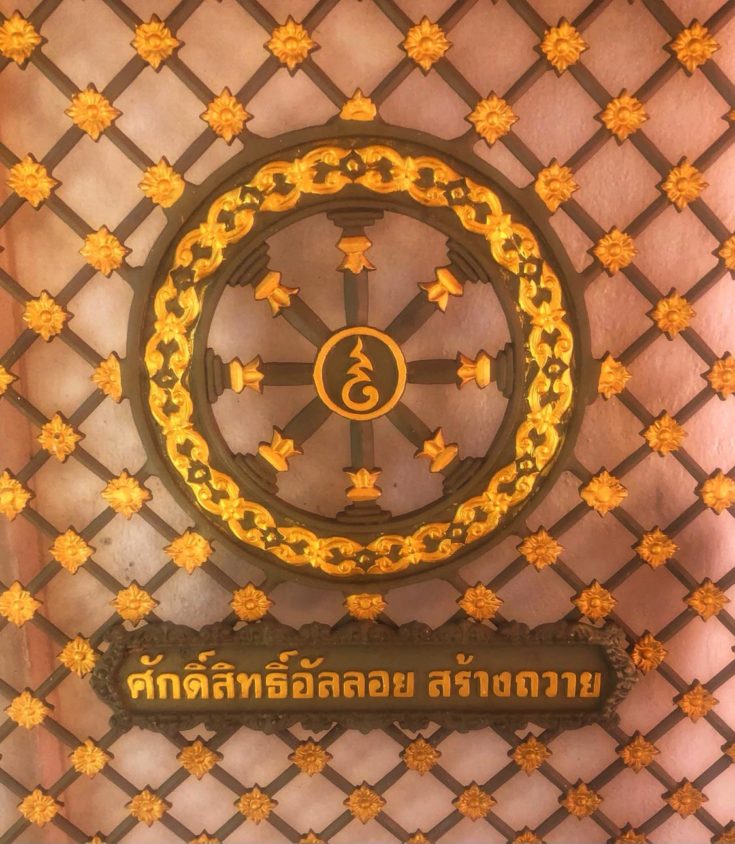Description
Wat Pa Suttawat (วัดป่าสุทธาวาส) is home to the Museum of Ajarn Man Phurithatto Thera, a famous Northeastern Thai monk also referred to as Ajahn Mun Bhuridatta or Luang Pu Mun. Ajahn Mun was born in the neighboring province of Ubon Ratchathani in 1870, and died while staying at Wat Pa Sutthawat in 1949. The museum, which is in modern looking terra cotta building, houses his ashes, as well as relics from his life, such as tools, alms bowl, dharma texts, drinking cups, and robes. Ajarn Man had many followers who became famous monks in their own right, such as Luang Pu Fan Acharo who has a museum in his honor at Wat Pa Udom Somphon, which is located in Phanna Nikhom, about 45 minutes away.
Like the Ajahn Fun Acharo Museum, the Achan Man Museum features beautiful bas-relief murals composed of small, individual tiles. Nearby on the temple grounds there is another monk museum: the rather avant-garde looking Museum of Luang Pu Louis Chanthasaro (หลวงปู่หลุย จนฺทสาโร), which was built at the behest of the late King Bhumibol (The Great) Adulyadej. Luang Pu Louis started out as a Christian, his uncle giving him the nickname St. Louis, and he kept the name after converting to Buddhism in 1923. On the bottom floor of the museum (which is in the shape of a chedi or stupa) there are some very interesting examples of the traditional Thai art of printing on sepia paper, and which show scenes from the legends of Siam and the Buddha's life.
Wat Pa Sutthawat's Ubosot (where monks get ordained) is rather striking, with its unusually tall and ornate pillars. The color theme of the Ubosot and the entire temple is red and gold, with the red and gold temple gates being fashioned by a "sacred alloy" featuring a dharma wheel in each section. Inside each dharma wheel is a symbol that we have (so far) been unable to decipher. If we figure it out, or someone sends us more information, we will update this page.










